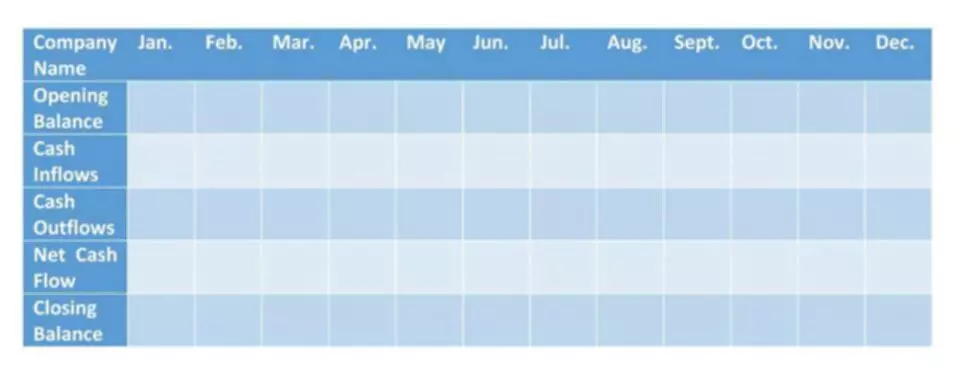Content

The owner’s equity increases or decreases by the net profit or loss reported for that particular year. Expense accounts are normally debit in nature, while income amounts are credit in nature. The owner’s equity for Public Limited companies also includes shareholder’s equity plus retained earnings. This may be because such companies issue shares to the general public. Shareholders thus, in fact, are the owners of the company and their equity is in the form of investments in shares.
- Total assets should be equal to the sum of liabilities and total equity.
- Owners should calculate the statement of retained earnings at the end of each accounting period, even if the amount of dividends issued was zero.
- Cost of purchasing new inventory refers to the amount of money you’ll have to spend to manufacture your products or services.
- Accounting equation explanation with examples, accountingcoach.com.
- When she’s not writing, Barbara likes to research public companies and play social games including Texas hold ‘em poker, bridge, and Mah Jongg.
- Refer to the chart of accounts illustrated in the previous section.
Non-Current liabilities are mainly used to finance non-current assets and include long term debt, mortgage, bonds, etc. Below, we’ll cover the fundamentals of the accounting equation and the top business formulas businesses should know. Read end-to-end for a thorough understanding of accounting formulas or use the list to jump to an equation of your choice. It helps maintain business efficiency by determining the debits and credits of business transactions. Similarly, find total liabilities (current and non-current) and shareholder’s equity for that period and add these two numbers.
Assets = Liabilities + Equity
Since the balance sheet is founded on the principles of the accounting equation, this equation can also be said to be responsible for estimating the net worth of an entire company. The fundamental components of the accounting equation include the calculation of both company holdings and company debts; thus, it allows owners to gauge the total value of a firm’s assets. This formula represents the relationship between the assets, liabilities, and shareholders’ equity of a business. The value of a company’s assets should equal the sum of its liabilities and shareholders’ equity. The concept this formula reinforces is that every asset acquired by a company was financed either through debt or through investment from owners . The accounting equation is a fundamental principle of accounting that states that the total value of an entity’s assets must equal the total value of its liabilities plus its equity.

T Accounts are informal financial records used by a company as part of the double-entry bookkeeping process. For every transaction, at least two classes of accounts are impacted. The cost of goods sold equation allows you to determine how much you spent on manufacturing the goods you sold. By simply subtracting the costs of goods sold from revenues, you’ll determine your gross profit. When you divide your net income by your sales, you’ll get your business’s profit margin.
Why is the accounting equation important?
Long-term liabilities are usually owed to lending institutions and include notes payable and possibly unearned revenue. The value of liabilities also keeps on changing from time to time. An increase in the value of liabilities means that the firm has to pay more and a decrease in the value suggests that the firm has to pay less. This content is for information purposes only and should not be considered legal, accounting, or tax advice, or a substitute for obtaining such advice specific to your business.
Furthermore, the accounting equation helps to ensure that a company’s financial statements are accurate. The balance sheet shows the assets, liabilities & owners’ equity. It is an extended version of the accounting equation showcasing how assets are equal to liabilities plus equity. Let’s take a look at certain examples to understand the situation better. In order to see if the accounts balance, we have to use the accounting equation. The accounting equation states that assets are equal to the sum of the total liabilities and owner’s equity.
Using accounting formulas to monitor your company’s financial health
Paul took $1000 from his savings to contribute to the starting accounting equation. He also took a soft loan of $4000 from a credit union to buy office supplies. Rebekiah received her BBA from Georgia Southwestern State University and her MSM from Troy University. She has experience teaching math to middle school students as well as teaching accounting at the college level. She has a combined total of twelve years of experience working in the accounting and finance fields. Accounting equation explanation with examples, accountingcoach.com.
- Rather, it provides the foundation to balance your accounts and create financial statements to understand the financial position of your business.
- This may be because such companies issue shares to the general public.
- Retained Earnings is Beginning Retained Earnings + Revenue – Expenses – Dividends – Stock Repurchases.
- Interest Payable is the amount of expense that has been incurred but not yet paid.
- Furthermore, the accounting equation helps to ensure that a company’s financial statements are accurate.
Woofer creates a new “account payable” and adds its value to Accounts payable. Note especially that Accounts payable is a liabilities account, and therefore its balance increases with a credit transaction. As we can see, the assets of $7,500 are equality to the liabilities and equity of $7,500. Make a trial balance to ensure that debit balances equal credit balances.
